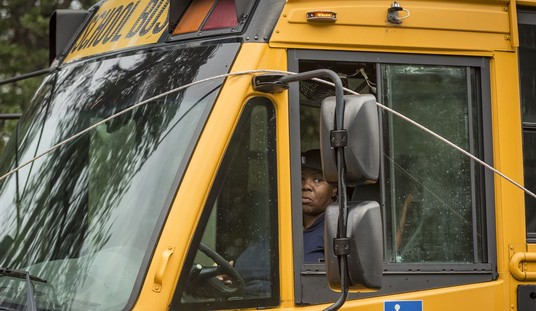Several years ago, my cousin, Steven, and I took a weekend trip to one of my favorite cities, Charleston, S.C., for my birthday. At some point, he bought a book about Charleston's ghost stories and legends, and for the rest of the day, he carried it around, reading this and that from it out loud. That evening, he wanted to go out late and walk around town, and at some point, we found ourselves sitting on a bench at White Point Garden.
If you've never been to Charleston, White Point Garden is a charming 5.7-acre park that sits at the southern tip of the peninsula on which the city is located. It's a lovely place that's surrounded by the Battery and some of the city's grandest homes. You can watch dolphins play in the water where the Ashley and Cooper Rivers meet to form the harbor, and the park itself is filled with majestic old trees and statues and monuments that tell story of the area's history (I assume the statues are still there; I haven't been in a few years, and I could see the woke folks tearing them down.)
Anyway, we were sitting there that night, close to midnight, and there were very few people around. Steven was reading to me a story about how pirates were hanged in the trees in that very location centuries before. Suddenly, we heard sounds above us, as the limbs of those trees began to crack and groan, and we jumped about a mile before realizing that a flock of very large birds had landed above our heads. (Even though it wasn't ghost pirates, we left anyway to avoid any accidents.)
I became fascinated with that story, though — the idea is that dozens of pirates were executed there in 1718 and left hanging in the trees for days as a grotesque warning to others. But did it really happen, or was this just a random ghost story? Even the Charleston County Public Library admits that the details are scarce, but that hasn't stopped historians from attempting to piece them together over the years. And it certainly hasn't stopped storytellers and folklorists from embellishing them. Let's take a look at the facts behind the lore.
It all started with the Battle of Cape Fear River, sometimes called the Battle of the Sandbars, which took place in modern-day North Carolina. On one side, you had William Rhett, a Colonel in the Provincial Militia and Vice-Admiral in the Colonial Navy, who was also a pirate hunter. On the other side, you had Stede Bonnet, the infamous "Gentleman Pirate," an educated and wealthy landowner who gave up everything for a life of crime.
The story goes that Bonnet had chosen the Cape Fear River to ride out hurricane season that year, and word spread to Providence of South Carolina Governor Robert Johnson. He sent Rhett, along with what was most likely a voluntary militia of 130 men, to take out Bonnet and his pirates.
Rhett reached the river's estuary on September 26, according to the Golden Age of Piracy. His ship, the Henry, hit a sandbar, and Bonnet and his crew of pirates believed it was a merchant. They set out to steal from them but quickly realized it was a group of pirate hunters and hurried back to their own ship. Bonnet, who was actually not a good pirate (that's a whole other article in itself), decided that his team would "fight their way out into the Atlantic Ocean" and spent the night preparing their weapons.
On their way out into the sea, they fired their cannons and muskets, but Rhett's team fired back. In an effort to avoid the retaliation, Bonnet's Royal James also ended up on a sandbar. They continued firing at each other. Bonnet reported "patrolled the deck with a pistol and promised to shoot any man who was a coward," while the "pirates themselves were in good spirits though and continually taunted the pirate hunters."
Here's more on what happened next:
After five hours of gun fighting the pirate hunters had lost thirty of their crew and nine of Bonnet's crew had been slain or injured. As the water began to rise in the early afternoon, it proved decisive for the Battle of Cape Fear River. Since the pirate hunters sloops were downstream they managed to get free from the sandbar first while Bonnet and the Royal James were still stranded. Soon Rhett and his crew repaired the rigging and raised the sails and moved the Henry into position to fire the starboard guns directly onto the deck of the Royal James.
At this point it seemed desperate, so Bonnet ordered his gunner George Ross to light the powder magazine and scuttle the Royal James. However, he was persuaded not to by his crew who had already surrendered. After a brief conflict between the remaining pirates the Royal James was boarded and the entire surviving crew plus Bonnet was [sic] captured.
Rhett and his men took Bonnet and his pirates back to Charleston (or Charles Town as it was known at the time) to face charges. They arrived on October 3. In November, through a series of thirteen trials, Judge Nicholas Trott condemned 49 men to death. Because there was no specific place for executions in South Carolina in those days, the judge ordered that the pirates be taken back to the Watch House so that preparations could be made. He most likely gave the provost marshal orders on when and where the executions should take place.
Trial documents that did survive through the years indicate that at least 29 men were hanged "at the White Point near Charles-Town" on November 8. More were hanged later in the month, and Bonnet himself met his fate there on December 10. There's been a lot of speculation about exactly where the hangings took place. Many like to embellish the story and tell you they were hanged from the trees that sit in White Point Garden today, as my cousin and I read, but it's more likely that the executions took place a little closer to the water on a "publicly-owned site of oyster shoals exposed at low-tide." Either way, it's the same general vicinity.
The location was chosen because of its visibility to boats and ships that passed the peninsula. The government wanted the morbid sight of pirates' hanging corpses rotting in the sun to be a warning to any other pirate or potential enemies. This is what we'll do to you, too.
A letter written by William, Earl of Craven, the Palatine (leader) of the Lords Proprietors of Carolina in 1684 suggests that this definitely wasn't the first time it had happened, either. It'd potentially been going on for decades. The English Board of Trade had apparently accused the colony of harboring pirates, but the letter, hoping to refute those allegations, stated that in 1684, three pirates were hanged indefinitely at the entrance of the port as a warning to others.
Some of my information here came from Dr. Nic Butler, a historian based in Charleston who does a cool podcast for the Charleston County Public Library. He concludes that "In my personal opinion, however, based on my experience of plowing through the early government records of South Carolina, I suspect that at least some of the forty-nine pirates hanged here in 1718 were left hanging at White Point for some unknown period of time. These mass executions were dramatic public spectacles, and I’m sure local authorities wanted to capitalize on their terrifying effect by perpetuating the visual impact for at least a while."
While we may never know the exact details of the hangings, there is enough evidence to prove that they most likely took place. And their ghosts will probably always be part of the lore that's passed down through generations of Charlestonians and tourists for years to come.










